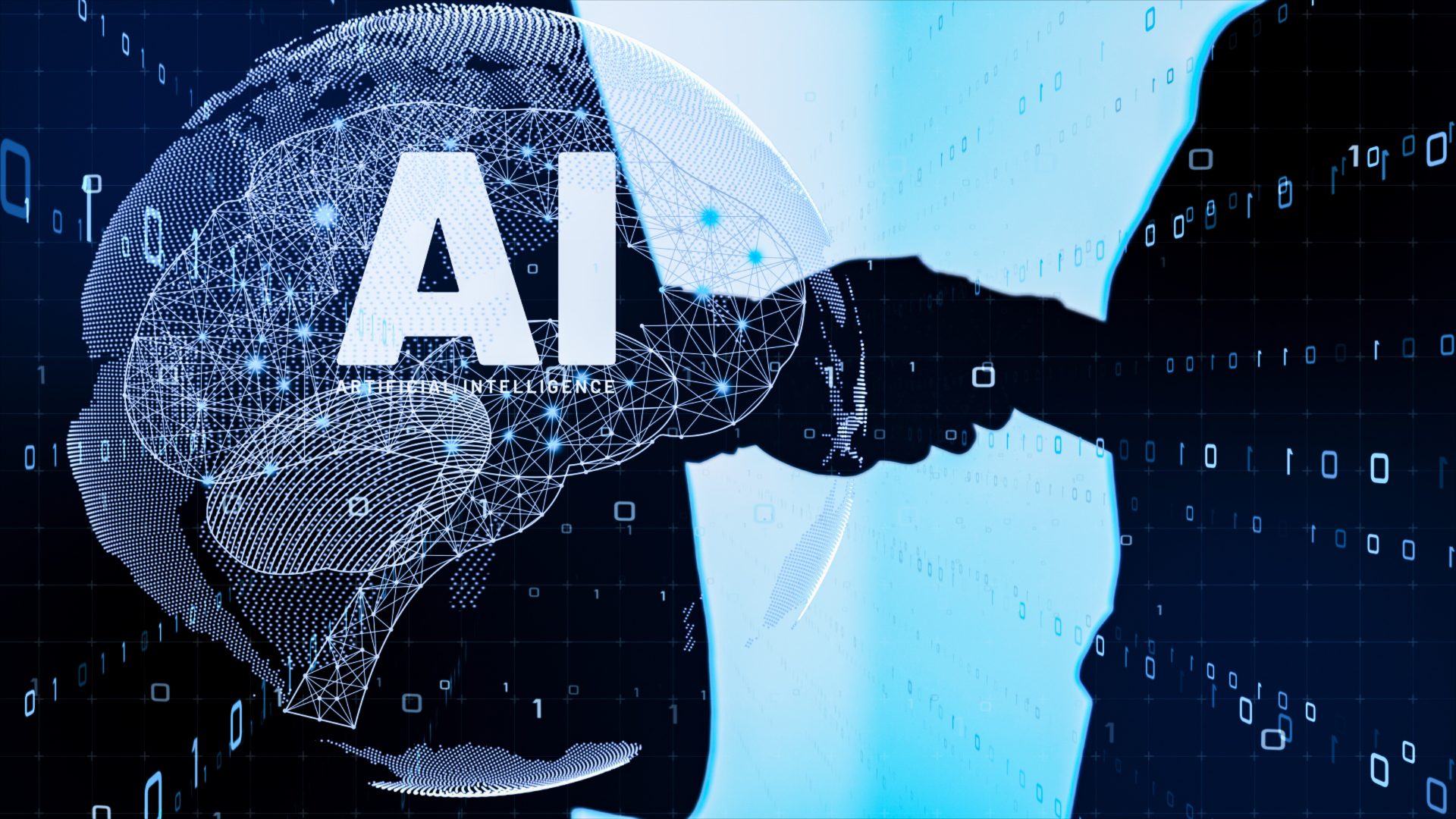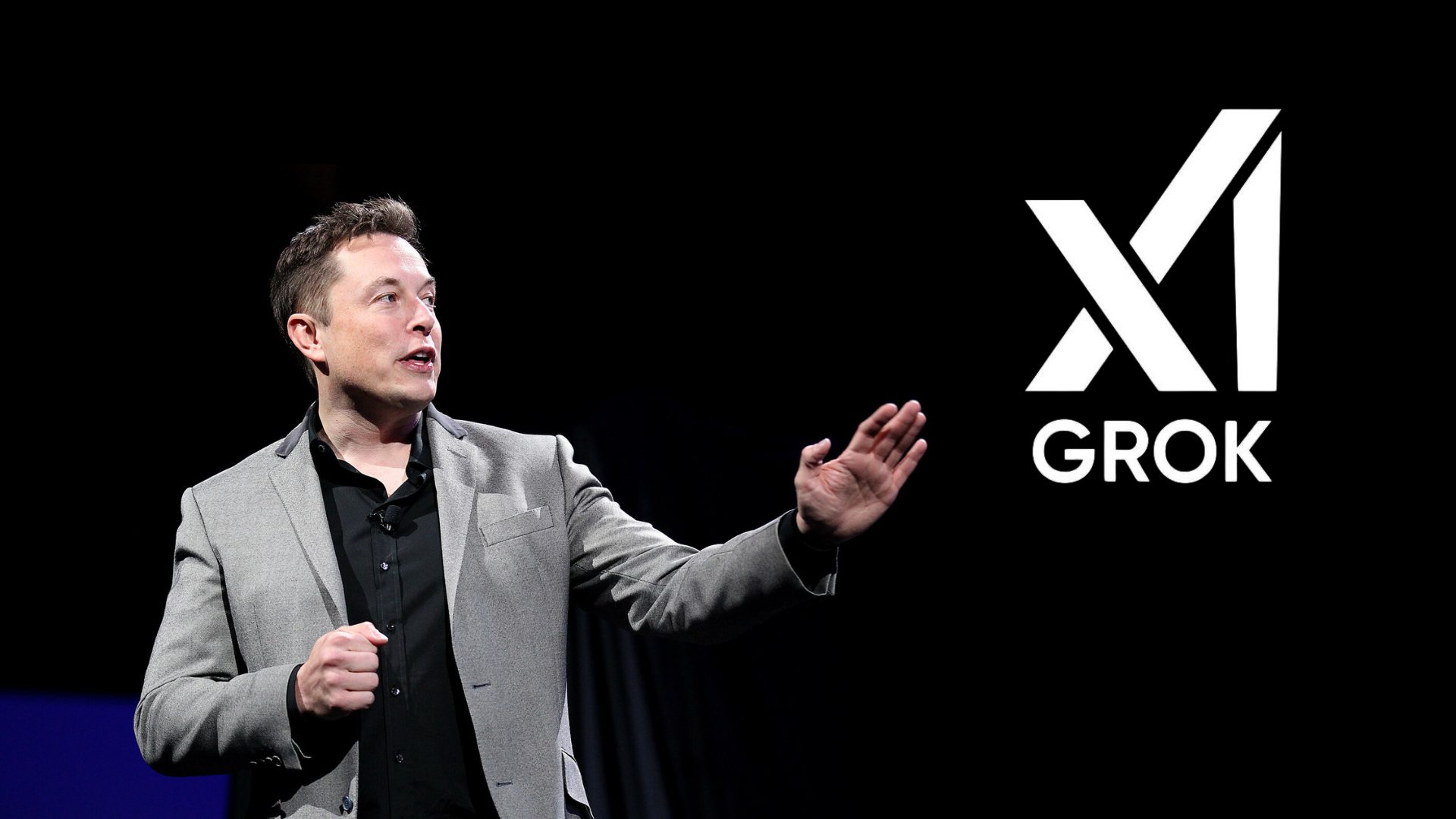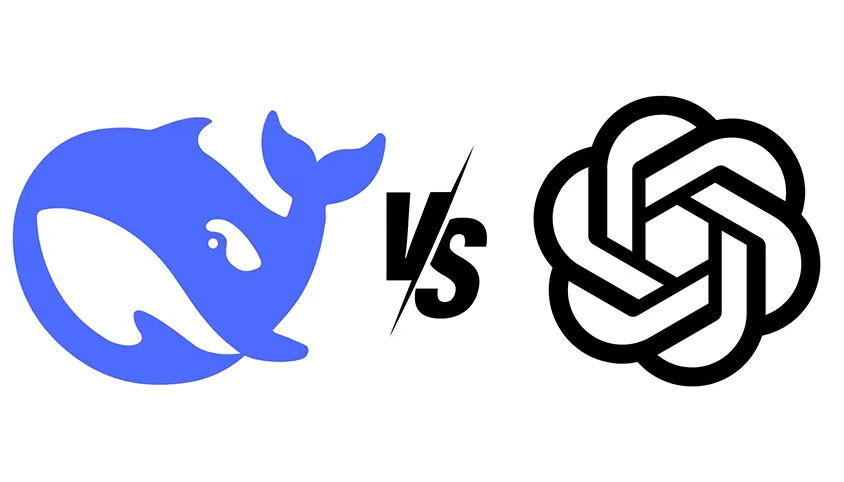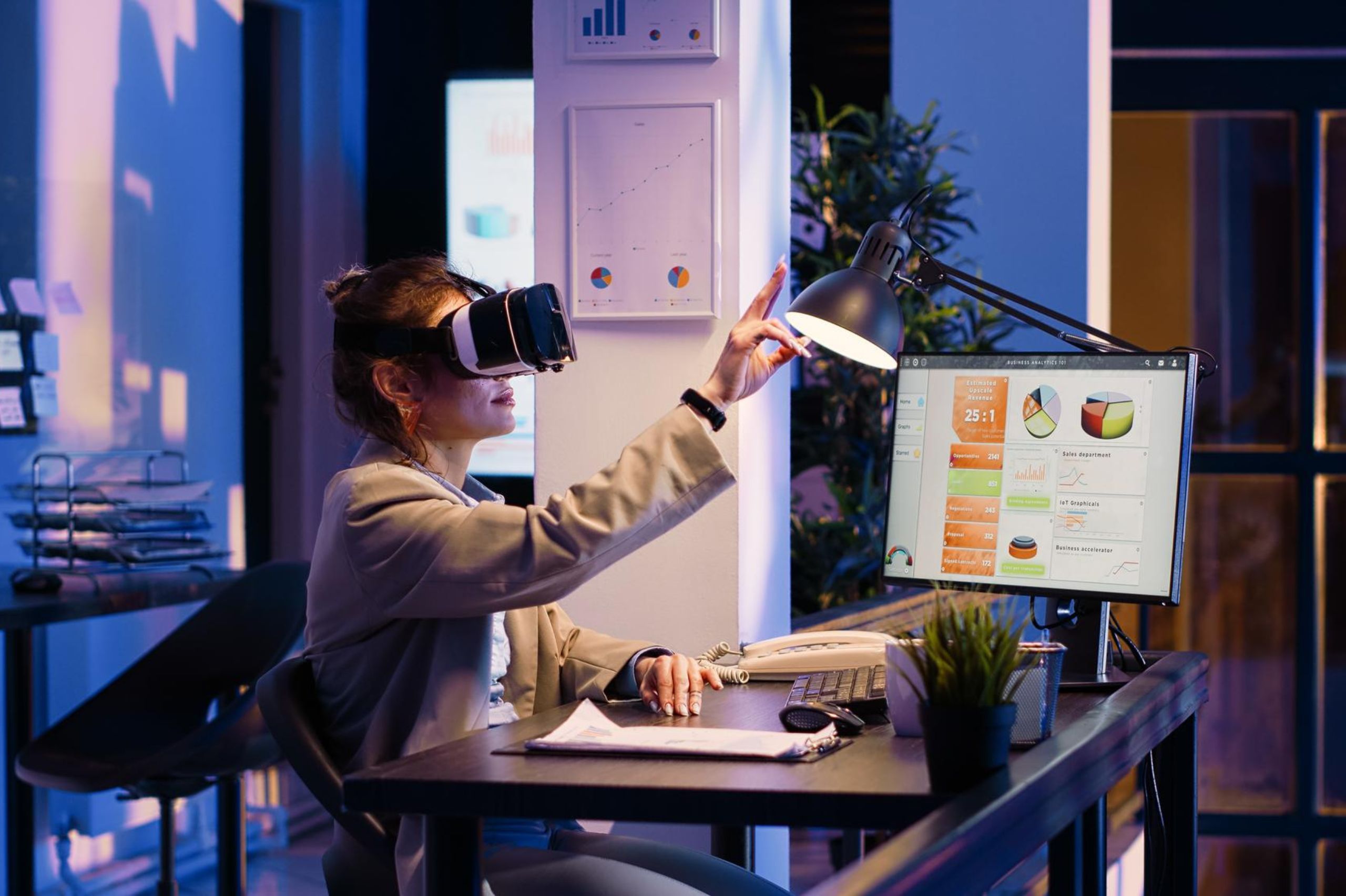
Websites are more than just online brochures in the fast-paced digital landscape. They are rather important contact points for users and help businesses grow through engagement. Web design is a traditional, highly creative, and manual process that has undergone a big change due to artificial intelligence. The invention of AI design tools, automated web design, and smart websites through AI revolutionized the making, optimization, and management of websites.
How AI is Changing Web Design?
AI is not just some futuristic buzzword. It’s an applied technology that is transforming web design in reality today. The application of AI in web design makes complicated things simple, enhances creativity, and delivers tailored user experiences.
Automated Web Design: A Game-Changer for Designers
Just imagine building a website without writing lines of code or hours perfecting a layout. AI-powered platforms such as Wix ADI have made it possible to create websites in just minutes. Here’s how:
- Template Generation: AI analyzes the user’s business needs and creates designs accordingly. For example, an AI tool can create a professional layout for a law firm and a playful one for a kids’ toy store.
- Content Suggestions: Automated systems draw in relevant text, images, and videos to populate the site, saving time on content curation.
- Real-Time Changes: Need to change colors or add sections? AI can suggest optimal design elements, ensuring everything looks cohesive.
AI Design Tools: Making Creativity Smarter
The balance of creativity and logic in designing a website that is visually appealing yet functional is made possible through AI design tools, such as Adobe Sensei and Canva’s AI features. It enables designers to work quickly and precisely.
- Personalized Images: AI will scan the data to recommend colors, fonts, and layouts that will resonate with the target audience.
- Automated Prototyping: Features such as drag-and-drop AI design enable rapid prototyping, shortening the development cycle.
- Error reduction: AI can ensure pixel-perfect designs by spotting inconsistencies in layouts or alignment issues.
Smart Websites: Enhancing User Experience
A smart website does more than look good; it adjusts to user behavior and provides a personal experience for the users. AI is central to this shift.
- Chatbots and Virtual Assistants: AI-enabled chatbots help improve customer service, answering queries in real time.
- Predictive Content: Smart website utilization of AI for real-time monitoring of user preferences, such as product recommendations or posting appropriate blog articles.
- Voice Search Optimization: AI makes sure websites get optimized for voice search according to the increasing popularity of virtual assistants such as Siri and Alexa.
Benefits of AI in Web Design
- Productivity and Speed
AI reduces repetitive work, such as coding and prototyping, through automation. This enables designers and developers to focus on creativity. To businesses, it gives faster website launches.
- Cost Efficiency
With AI taking most of the workload, business firms can cut back on manual labor and time-consuming design processes. Professional websites with automated web designing tools are within reach even for small start-ups.
- Improved Creativity
By taking away the drudgery, AI leaves room for designers to concentrate on creative ideas. Tools suggesting innovative layouts or color palettes boost creativity.
- Data-Driven Design
AI does not guess. It is data-driven, and it ensures that the designs are in line with the users’ preferences and trends. This results in better engagement and ROI.
Challenges of AI in Web Design
Despite all the numerous benefits AI brings to web designing, it also has challenges.
- Lack of Human Touch
Although machines are highly efficient, they lack the human creativity and sensibility that may be required for certain work.
- Dependency on Data
AI is data-dependent in nature. Low-quality data can make design suggestions wrong.
- Security Issues
Any smart website or AI-based tool manages vast amounts of data. It creates security issues due to data hacking and even privacy loss.
The Future of AI in Web Design
As AI continues to evolve, its role in web design will only grow. Here’s what the future holds:
- Hyper-Personalization: Websites will become even smarter, tailoring experiences down to individual user preferences.
- Voice-Driven Design: Expect websites optimized for voice commands, making navigation seamless.
- AI as a Co-Designer: AI will work alongside designers, offering suggestions and learning from their choices to improve over time.
Embracing AI for Smarter Web Design
AI is transforming web design by making it more accessible, efficient, and user-centric. Whether you’re a small business owner or a seasoned designer, embracing tools like AI design tools, automated web design, and smart websites can elevate your online presence. The key is to use AI as a complement to human creativity, not a replacement.
Ready to check out AI-based web design solutions? Check out the best web design companies on Right Firms which use AI for their service offerings.
Submit Your Inquiry
Related Posts
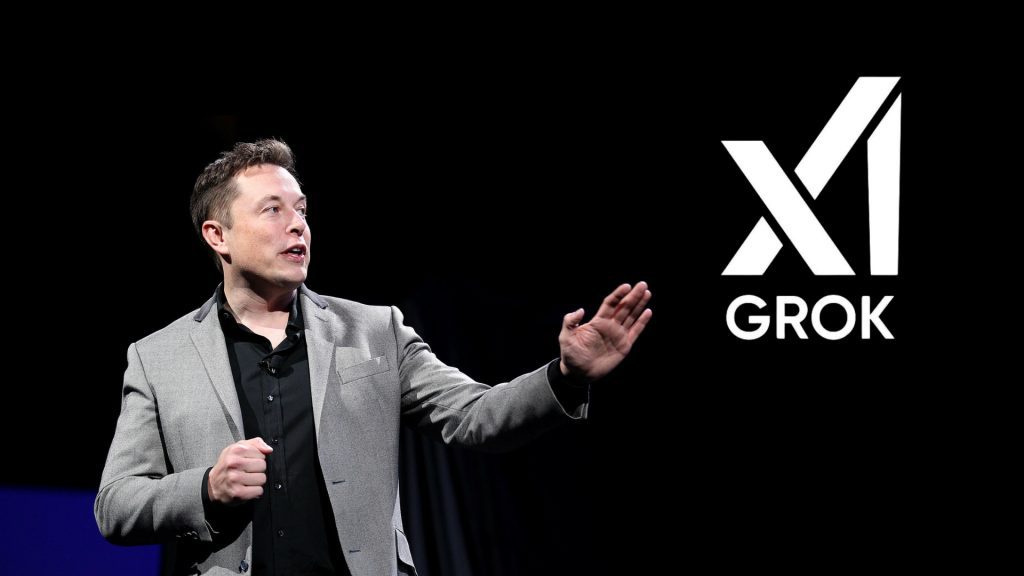
Apr 2025
Grok AI: What We Know About Elon Musk’s AI Chatbot
The Rise of Grok AI in a Competitive Landscape Elon Musk's xAI has made its "entry" into the AI arms race with Grok, a chatbot that claims to be a "maximally truth-seeking" substitute for models like ChatGPT and Google Gemini. It was brought online in 2023 and got the Grok 3 upgrade in early 2025, and ever since, it has been the center of the arguments about its potential, ethics, Musk's AI vision. Grok is a combination of advanced reasoning, real-time data integration, and a bit of Musk's typical boldness, and is meant to be the bearer of uncomfortable truths that the politically correct would rather remain untold. This blog takes a look at the inception, framework, issues, and significance of AI development to researchers and tech gurus who are practically AI enthusiasts. 1. The Evolution of Grok: From Musk’s OpenAI Exit to Grok 3 Origins and Mission Musk co-founded OpenAI in 2015 but in 2018, he left because of a dispute about the company’s direction, especially its move toward profit-driven models. By 2023, he established Grok under xAI, which he positioned as a response to the so-called “woke” AI systems that evade uncomfortable truths. The title “Grok” comes from Robert Heinlein’s Stranger in a Strange Land and it means “to understand deeply”. Grok 3: A Quantum Leap Model Training: Grok 3 was trained on the Colossus Supercomputer, a custom-built data center in Memphis with 200,000 NVIDIA H100 GPUs—10x the compute power of its predecessor, Grok 2. Speed: Pre-training completed in January 2025, with Musk claiming daily improvements . Benchmarks: Outperforms rivals like GPT-4o, Gemini 2 Pro, and DeepSeek-V3 in math, coding, and science tasks, scoring 95%+ accuracy in multimodal tasks. 2. Technical Architecture: Powering Grok’s “Big Brain” Hardware and Infrastructure Colossus Supercomputer: Built in 92 days, this system processes 15,000 tokens/second and supports a 32,768-token context window. Multimodal Design: Handles text, images, audio, and video, with upcoming voice and audio-to-text features. Key Innovations DeepSearch: An agentic search tool that scours the web (including X/Twitter) to generate detailed reports with citations, rivaling Perplexity’s DeepResearch. Chain-of-Thought Reasoning: Shows step-by-step problem-solving, such as calculating Earth-Mars trajectories or creating hybrid games like “Tetris + Bejeweled”. Self-Correction: Reduces “hallucinations” by evaluating outputs against verified data. Ethical Safeguards Responsible AI: Grok 3 explains its reasoning before answering and includes bias filters, though critics argue its “anti-woke” stance risks spreading misinformation. 3. Grok’s Standout Features: Why Developers Are Watching For AI Developers API Access: Soon available for enterprises, enabling integration into apps for healthcare diagnostics, fraud detection, and code generation. Customization: Industry-specific tuning for finance, education, and healthcare. Open-Source Plans: Musk pledged to open-source Grok 2 once Grok 3 stabilizes, a move that could democratize access to its architecture. User-Facing Tools Big Brain Mode: Allocates extra compute resources for complex queries, like legal analysis or market forecasting. Voice Mode: Upcoming feature for natural conversations, akin to ChatGPT. 4. Controversies: Balancing Innovation and Ethics Content Moderation Challenges Deepfake Risks: Grok 2’s image generator faced backlash for enabling deepfakes, prompting xAI to add safeguards in Grok 3. “Anti-Woke” Backlash: Critics argue Grok’s unfiltered responses on politics and culture could amplify harmful narratives. Musk vs. OpenAI Legal Battles: Musk sued OpenAI in 2025, accusing it of abandoning its nonprofit mission, and bid $97B to buy its nonprofit arm—a rejected offer he framed as a rescue attempt . Infrastructure Race: xAI’s 10Bfundinground(targeting 10Bfundinground(targeting75B valuation) trails OpenAI’s 40Bask(300B valuation), reflecting fierce competition. 5. Business Model: Monetizing Truth-Seeking AI Tiered Subscriptions: Premium+: $40/month for X users. SuperGrok: $30/month for advanced features like unlimited image generation and DeepSearch. Enterprise API: Forthcoming access to Grok 3’s API, priced per token. 6. The Future of Grok: AGI and Beyond Musk envisions Grok as a stepping stone to artificial general intelligence (AGI). Key focus areas include: Real-Time Learning: Integrating live X/Twitter data streams for up-to-date responses. Global Expansion: Addressing infrastructure gaps (e.g., Dell’s $5B server deal) to scale compute power. Ethical AI: Balancing free speech with safeguards, a tightrope walk that could define Grok’s legacy. Conclusion: Grok’s Role in Shaping AI’s Future Grok AI captures Musk’s two-sided concept that is a never-ending ambition for technology and a provoking attitude towards “truth.” The technology that it offers astonishes developers and its structures of operation, but, on the other hand, it’s banned by the controversies that come with it and it shows the difficulty in aligning AI with the values of society. To AI fans, Grok is an opportunity to see the future that may be built not by chatbots who only answer the questions but also by chatbots who ask, stimulate, and redefine what is considered new.

Mar 2025
ChatGPT’s Image Generator Ignites a Studio Ghibli Art Revolution
Introduction: When AI Meets Anime Magic The internet is ablaze with whimsical landscapes, beloved memes, and iconic movie scenes reimagined in the dreamy aesthetic of Studio Ghibli—all thanks to OpenAI’s groundbreaking ChatGPT image generator. Launched as part of the GPT-4o upgrade, this tool has unleashed a tidal wave of creativity, turning everyday users into digital artists overnight. From Bollywood classics to Elon Musk memes transformed into Ghibli-style vignettes, the tool’s ability to blend AI precision with artistic flair has captured global attention. But what makes this feature so revolutionary, and why is Studio Ghibli at the heart of this frenzy? Let’s explore. What’s New in ChatGPT’s Image Generator? OpenAI’s latest upgrade, “Images in ChatGPT”, isn’t just another AI art tool—it’s a paradigm shift. Built natively into GPT-4o, the model is omnimodal, meaning it seamlessly processes text, images, audio, and video.Here’s what sets it apart: Style Transformation Mastery: Upload any image, and ChatGPT can reinterpret it in styles ranging from Studio Ghibli’s ethereal charm to South Park’s satire. Photorealistic Precision: Stunning details like realistic lighting, textures, and facial expressions push the boundaries of AI-generated art. Text Integration: Unlike predecessors, it accurately renders text within images—ideal for logos, posters, and infographics. No Watermarks: Outputs are clean, without DALL-E’s signature watermark, raising both excitement and ethical questions. The Studio Ghibli Connection: Why This Style Dominates Social Media Studio Ghibli’s films—Spirited Away, My Neighbor Totoro, and Princess Mononoke—are celebrated for their lush, hand-drawn aesthetics and heartfelt storytelling. The studio’s idyllic worlds, where everyday moments feel magical, resonate deeply with audiences. ChatGPT’s Ghibli-esque outputs tap into this nostalgia. Users are transforming personal photos, memes, and historical moments into scenes that could belong in a Miyazaki film. For example: A viral post reimagined Bollywood classics with Ghibli’s soft hues and whimsical character designs. Elon Musk’s rally jump became a fantastical leap over a Ghibli-inspired countryside. Even mundane objects, like coffee cups, gain charm when rendered with the studio’s signature “twinkle.” Why Ghibli? The style’s emphasis on nature, emotion, and simplicity aligns perfectly with AI’s strength in pattern replication. Yet, this trend also highlights a paradox: Studio Ghibli co-founder Hayao Miyazaki once called AI art “an insult to life itself,” critiquing its lack of human soul. Beyond Ghibli: ChatGPT’s Versatility in Art and Design While Ghibli dominates headlines, the tool’s versatility shines across creative domains: 1 .Pop Culture Mashups: Transform photos into Minecraft blocks, South Park characters, or vintage Polaroids. 2. Design Powerhouse: Generate logos, product mockups, and ad campaigns with precise color codes (using hex values) and transparent backgrounds. 3. Surrealism Unleashed: Combine absurd prompts (e.g., “a cat astronaut brewing coffee on Mars”) with styles like rubber hose animation or watercolor. How to Create Your Own Ghibli-Style Masterpiece Ready to join the trend? Follow these steps: 1 . Access the Tool: Available to ChatGPT Plus, Pro, Team, and API users (free tier rollout delayed due to demand). 2. Upload & Describe: Provide a clear image and prompt like, “Transform this into a Studio Ghibli scene with magical forests and soft lighting.” 3. Refine Details: Use follow-up prompts to adjust expressions, backgrounds, or add whimsical elements (e.g., “Give her a Totoro companion”). Experiment: Try blending styles (“Ghibli meets cyberpunk”) for unique hybrids. Ethical Considerations: Creativity vs. Controversy The tool’s launch hasn’t been without debate: 1 .Originality Concerns: Can AI truly replicate human artistry, or does it dilute creative integrity? 2. Miyazaki’s Stance: The Ghibli co-founder’s 2016 critique of AI as “disgusting” contrasts sharply with its current viral use.3. OpenAI’s Safeguards: The company blocks harmful content (e.g., deepfakes), but ethical dilemmas around copyright and attribution persist. Availability and Future of AI-Generated Art Despite its rocky rollout—Sam Altman cited unprecedented demand delaying free access—the tool signals AI’s growing role in democratizing creativity. Upcoming API integration for Enterprise and Education sectors promises broader applications, from marketing to interactive storytelling. Conclusion: A New Chapter for Digital Artistry ChatGPT’s image generator isn’t just a tool; it’s a cultural phenomenon. By bridging AI’s analytical power with human imagination, it invites everyone to re-envision their world through Studio Ghibli’s lens—or any style they choose. Yet, as we marvel at its potential, Miyazaki’s cautionary words remind us to cherish the human spirit behind art. Whether you’re a designer, meme lover, or Ghibli fanatic, this tool offers a canvas limited only by your creativity.

Feb 2025
Top Programming Languages to Learn in 2025 for High-Paying Jobs
If you are new to software development, knowing where to start is the most challenging part of learning programming. Several hundred programming languages are used daily, each with quirks and challenges. The best news is that as you begin your career as a software developer, you'll start to learn the best coding language for your interests and goals.This blog post will cover the most in-demand programming languages and how to learn them to kickstart a coding career. What is a programming language? A programming language is a set of instructions written in a particular syntax to tell a computer what to do and how to do it. Mastering a programming language will enable you to create software applications, websites, and other digital tools shaping our world. Principal Programming Language Types There are many different programming languages, each with unique advantages and disadvantages, so consider this when choosing the best ones to learn.The main categories of programming languages are as follows: Languages for procedural programming: These languages decompose issues into sequential steps. Typical examples are Pascal, C, Cobol, and BASIC.Functional programming languages focus on altering data structures without changing existing data to provide more predictable results. Some well-known functional languages include Scala and Haskell. Programs in object-oriented programming languages are structured around objects that hold information (properties) and actions (methods). Python, Java, and C++ are well-known examples of this object-based methodology. Scripting and dynamic languages are lightweight programming languages frequently used to add interactivity to web pages or automate processes. Two popular scripting languages are JavaScript and Ruby. Logic programming languages use logic and reasoning to solve problems. They offer a distinct method for solving issues and are frequently employed in applications involving artificial intelligence. Prolog is a well-known example of a logic programming language. Top Programming Languages to Learn in 2025 As more than 700 programming languages are available, you probably want to know which is best to learn. Ultimately, your decision will be influenced by your professional objectives, skill level, and the languages companies use in their workplaces. These are the top 15 programming languages to learn in 2025 to get you started. 1. JavaScript With increasing demand for dynamic web applications, becoming a professional software developer is nearly impossible without learning JavaScript. According to Stack Overflow's 2024 Developer's Survey, JavaScript is the most popular programming language among developers for the eleventh year in a row, with 62% of survey respondents reporting that they had used it the past year. Most of the most visited sites on the web, including Facebook, Twitter, Gmail, and YouTube, use JavaScript to develop interactive web pages and dynamically display content to users. The extensive list of applications makes JavaScript one of the finest programming languages to learn.Major Features: Versatility: JavaScript can be utilised for front-end as well as back-end development.Interactivity: It provides dynamic functionality to web pages, making them engaging and responsive.A large community: The JavaScript community is significant and growing! Those looking to learn it can find extensive online resources, including tutorials, frameworks, and other tools that make learning and troubleshooting easier.Prerequisites: A foundational grasp of HTML and CSS is advised for efficient JavaScript web development.Skills Required: Potential JavaScript programmers should be capable of addressing problems and interested in procedural reasoning, logic, and problem-solving.Platforms: Node.js server-side environments and web browsers. Examples of Use: Developing dynamic web components Constructing dynamic online apps Creating apps that are only one page (SPAs) Including user interfaces and animations JavaScript engineers typically make around $116,340 a year, as per Indeed Oct 2024. 2. Python Python is arguably the most accessible programming language on this list. Its syntax is straightforward and intuitive, particularly for English speakers, since it follows grammar rules. This makes it a favourite among beginners looking for the best programming languages to learn for themselves.Key Features: Readability: Python's simple and concise syntax is similar to natural language, making it more straightforward to learn and maintain. Versatility: It’s widely used in web development, data science, scripting, machine learning, and other applications. Extensive libraries: Thanks to a vast collection of pre-written code (libraries), it’s easy to simplify complex tasks and streamline development with Python. Prerequisites: Programming in Python requires a basic understanding of computer science concepts, which is helpful but not integral. Skills Needed: Python programmers should be solution-focused and interested in structures and data analysis. Platform: All major operating systems (Windows, macOS, Linux) Use Cases: Web development (back-end)Data science and machine learningScripting and automationScientific computingGame development (with frameworks) Average Salary: Python developers earn around $125,102 per year as per Indeed Oct 2024 3. SQL In addition to Python, SQL coding is crucial to effectively using data in web applications and is, therefore, among the best programming languages to learn. While other coding languages are on our list, SQL explicitly allows storing, retrieving, and manipulating data in a given relational database. Key Features: Standardised use: SQL is supported by a majority of database management systems. Declarative ability: Its operation depends on what information to fetch or handle rather than the exact steps. Relational functionality: SQL allows querying and handling information among related tables in a database. Prerequisites: Familiarity with database management concepts is ideal for SQL. Skills Required: SQL programmers must learn data structures, storage, and retrieval. Platform: All major database management systems (e.g., MySQL, PostgreSQL, Oracle) Use Cases: Data retrieval and manipulation in relational databasesMaking reports and data analysisMaintenance and management of databasesIntegration with other programming languages for data-driven applicationsThe average Salary as per the Glassdoor June 2024 is $116,507. 4. Swift Swift has become the popular language for creating contemporary iOS, iPadOS, macOS, watchOS, and tvOS applications. Apple introduced Swift in 2014, a new programming language to develop iOS and macOS applications. Swift has been optimised for performance and built from the ground up to match the realities of modern iOS development, making it one of the best programming languages to learn for aspiring iOS developers. These developers will likely remain in demand as Apple products remain the most profitable mobile app marketplace. Key Features: Modern Design: Swift offers a safe, readable, and expressive syntax for efficient development. Platform Integration: It seamlessly integrates with Apple's development tools and frameworks. Safety Features: Swift emphasises memory and type safety, reducing crashes and errors. Prerequisites: Ideally, those looking to specialise in Apple programming are interested in iOS functionality. Skills Needed: Coders working in Swift should have some existing familiarity with Apple's development tools (Xcode)> Platform: Apple platforms (iOS, iPad, macOS, watchOS, tvOS) Use Cases: Building native iOS, iPad, macOS, watchOS, and tvOS applicationsMaking multimedia applications and computer games for Apple devices Mean Salary: $119,319 (Indeed, Oct 2024) 5. Java Java is still a leader in programming, particularly for enterprise software development. Its write-once, run-anywhere concept and mature environment make it a go-to option for developing large-scale applications such as servers. Key Features: Platform independence: Java code can be executed on multiple operating systems without alteration.Object-oriented functionality focuses on code reusability and maintainability by following object-oriented concepts.Large libraries and frameworks: Java has a healthy collection of libraries and frameworks supporting various development purposes.Prerequisites: Basic notions of coding could be helpful.Skills Required: Analytical minds, object-oriented programming principles, knowledge of major Java libraries and frameworks (in case of higher-level development)Platform: Every central operating system (Windows, macOS, Linux)Applications: Enterprise application construction (web, desktop, mobile with frameworks)Big data processing (Hadoop)Android developmentEmbedded system development Average Salary as per (Indeed, Oct 2024) $91,234 Best Programming Languages to Learn to Fulfill Your Career Aspirations Only you can answer the question of the best programming language to learn for your career aspirations. Your choice should be based on your career interests and whether you want to develop front-end or back-end web-based software. In brief, this is what we have discussed so far: Front-end web development: JavaScript, TypeScriptBack-end web development: JavaScript, TypeScript, Python, Go, Elixir, C#Mobile development: Swift, Java, C#Game development: C#Desktop applications: Java, Python, JavaScript, TypeScriptSystems programming: C, Rust, Go It’s Code Time Computer programming is a fast-changing field; however, the languages above bear much staying power. Learning one or more of them will place you in an excellent position this year and for years. Once you master one programming language, learning a second language will likely be easier since you can draw on existing knowledge.




